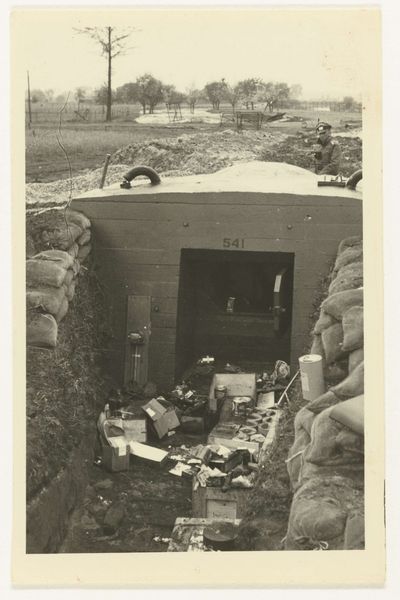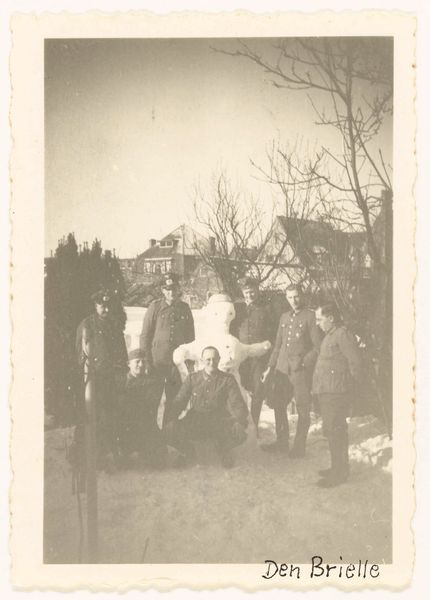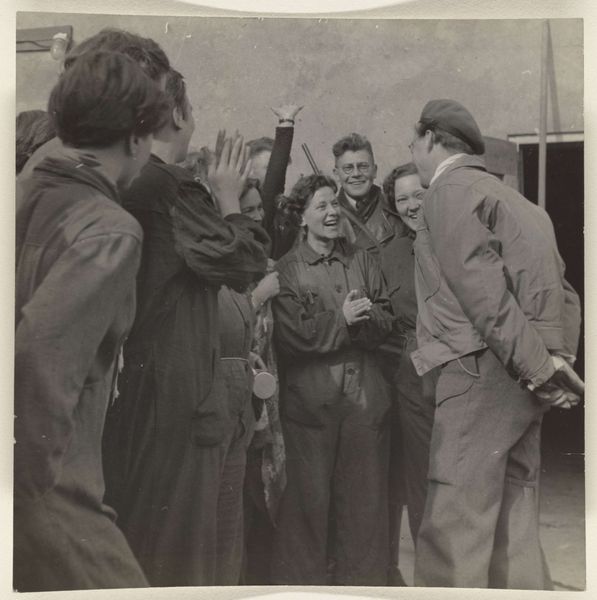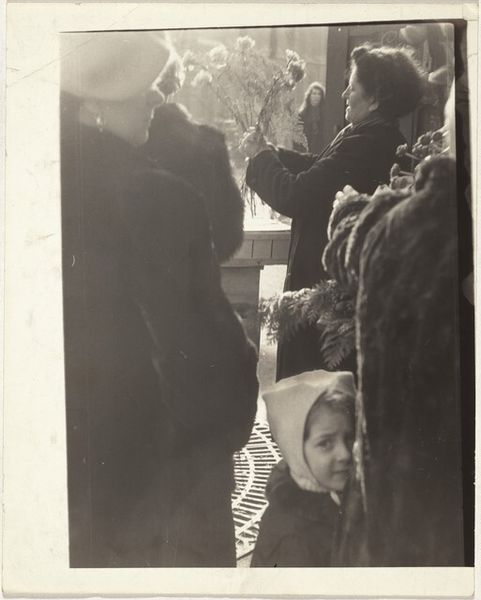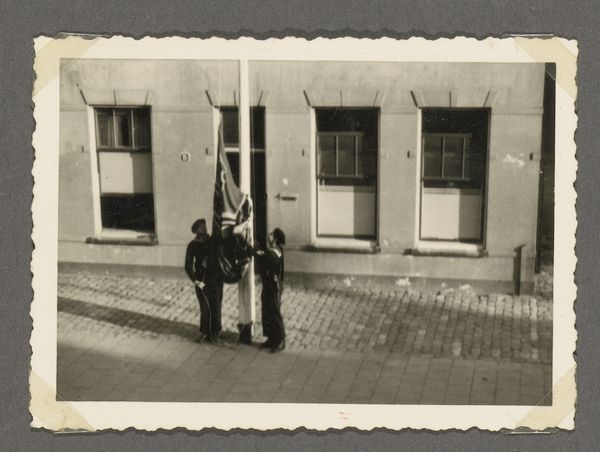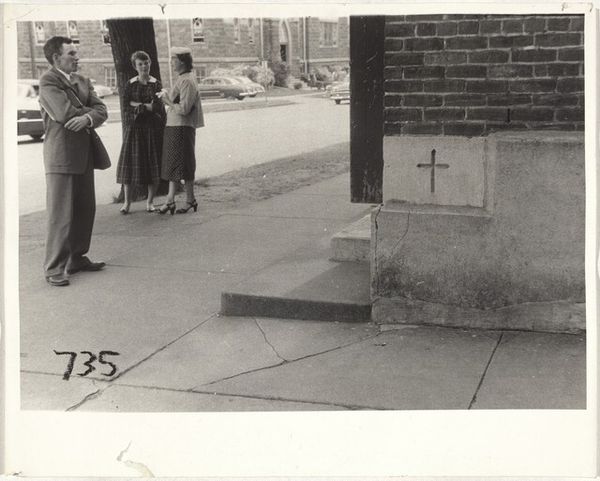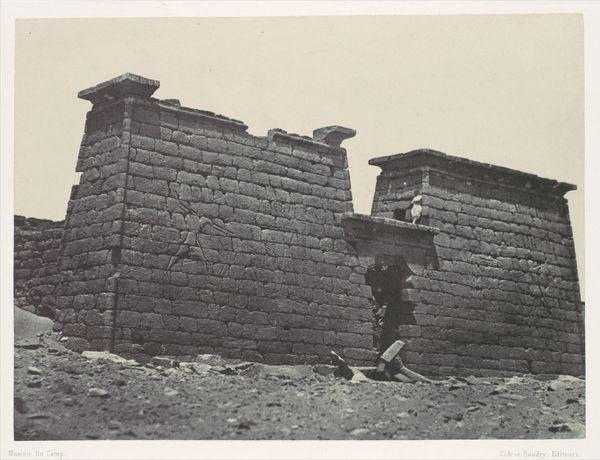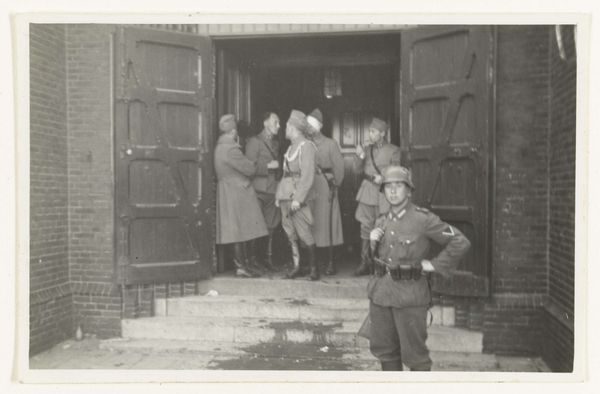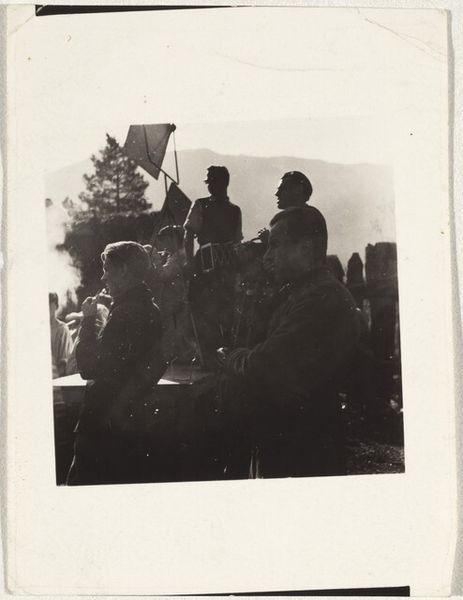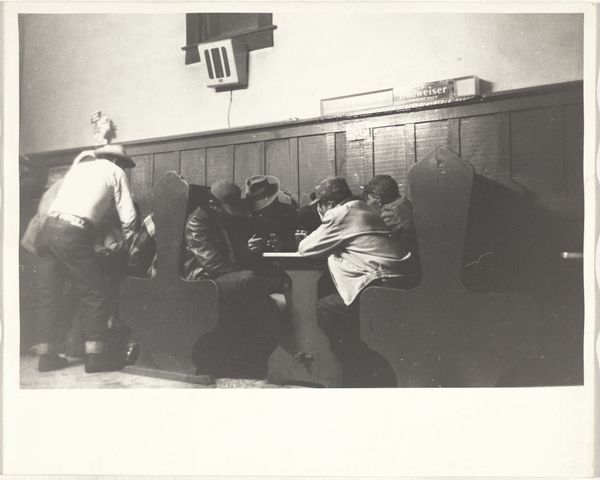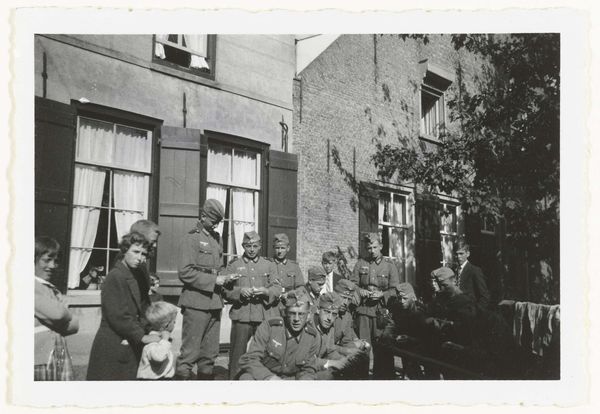
Mannen, vrouwen en kinderen bij de ingang van een schuilkelder in Nijmegen 1946
0:00
0:00
print, photography, gelatin-silver-print
#
print photography
# print
#
street-photography
#
photography
#
gelatin-silver-print
#
monochrome photography
#
genre-painting
#
history-painting
#
realism
#
monochrome
Dimensions: width 7.5 cm, height 24 cm
Copyright: Rijks Museum: Open Domain
Curator: Here we have “Mannen, vrouwen en kinderen bij de ingang van een schuilkelder in Nijmegen,” a gelatin silver print dating to 1946 by Associated Correspondents. The black and white image depicts a group of people clustered around the entrance of a shelter. Editor: It's a striking image, somber. The faces are shadowed, making it hard to read their expressions. The stark contrast between the white sky and the dark shelter adds to the feeling of unease. Curator: Indeed. This photograph captures a moment in Nijmegen shortly after the Second World War. The shelter, still in use, is a stark reminder of recent conflict. Editor: I am interested in the positioning of the subjects in this image. You've got the children playfully placed on top, contrasting with the adults below and adding a multi-generational layer to the fear and uncertainness portrayed. It also gives visual insight into how society functions during and after a conflict. Curator: Precisely, these photographs were very intentional about representing society after wartime. I also believe there’s a sharp divide between public and private spheres during wartime, with shelters becoming an intermediary space where social roles and expectations were renegotiated and broken. Editor: It highlights the resilience of the human spirit amidst destruction. Look at the clothes hanging on the line above, like a signal of daily life returning. Curator: The laundry acts as a potent symbol here, yes, representing a return to domestic normalcy amid visible trauma. The inclusion of women and children as well serves to add additional commentary on social recovery as well as offering different lenses to look at collective experiences following devastation and loss. Editor: I agree; it underscores the domestic experience, and positions women at the heart of community rebuilding after war. It also reminds us of the unequal burdens and gendered responsibilities placed on women, especially during the period of social recovery. Curator: Exactly. This photograph functions as a record, capturing both the anxieties of war and a vision of hope that lies in everyday acts of living. Editor: Looking at this print helps us not only confront a difficult period but also prompts us to think more broadly about the dynamics of conflict, resilience, and social transformation that linger for a lifetime.
Comments
No comments
Be the first to comment and join the conversation on the ultimate creative platform.

